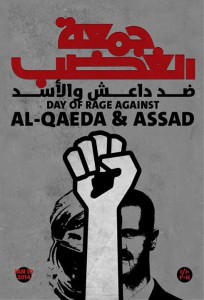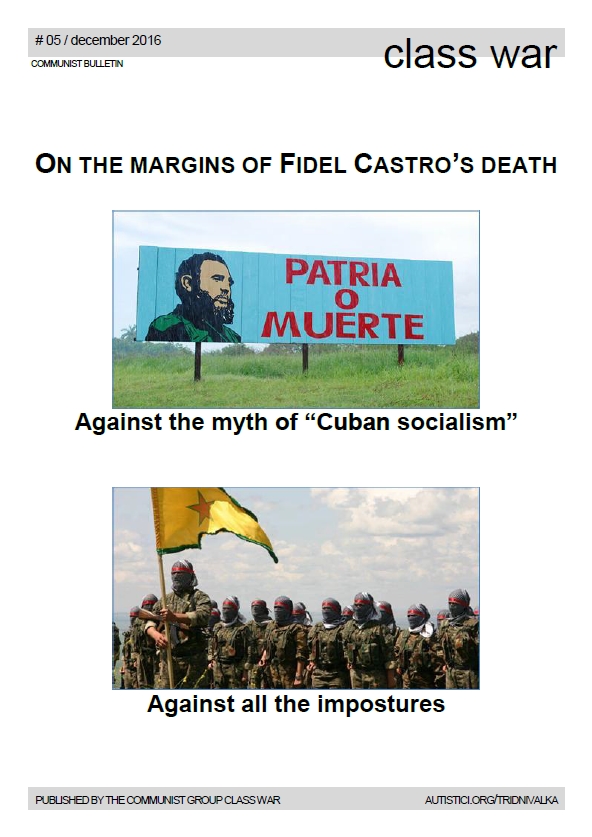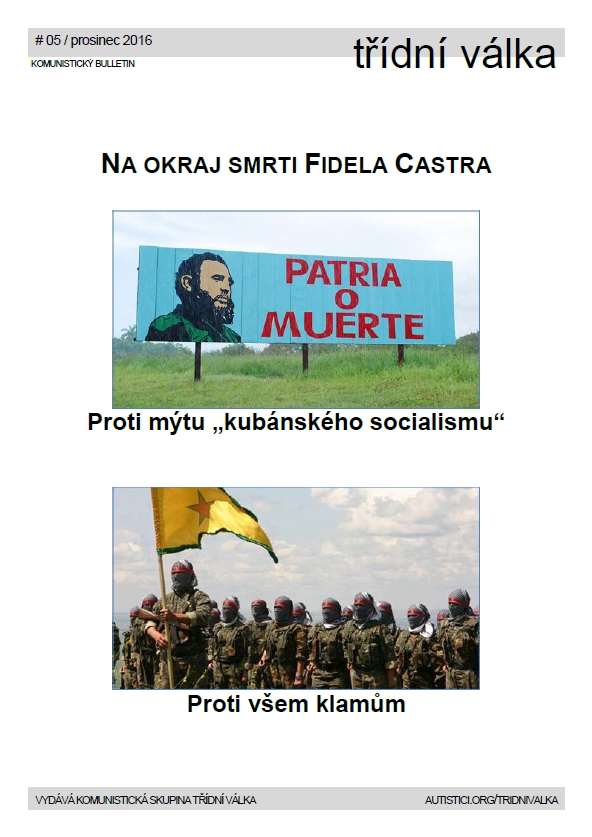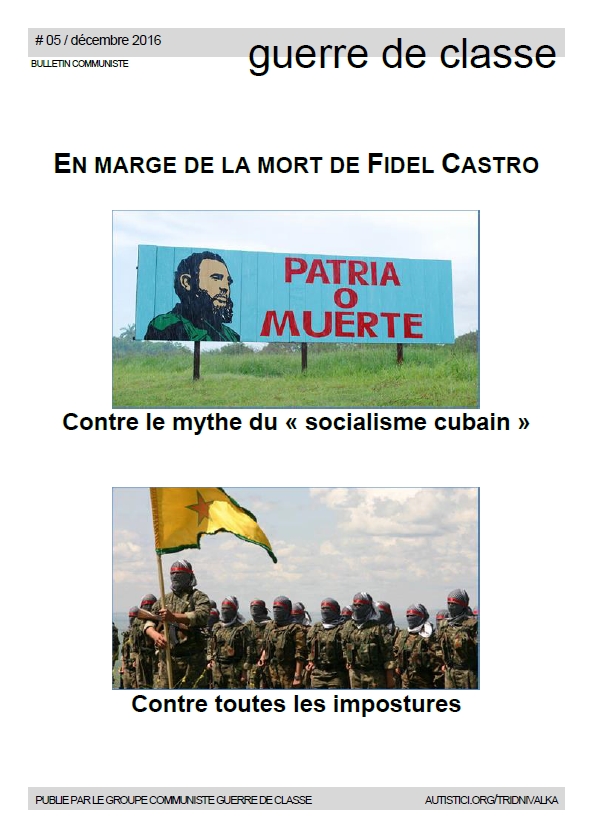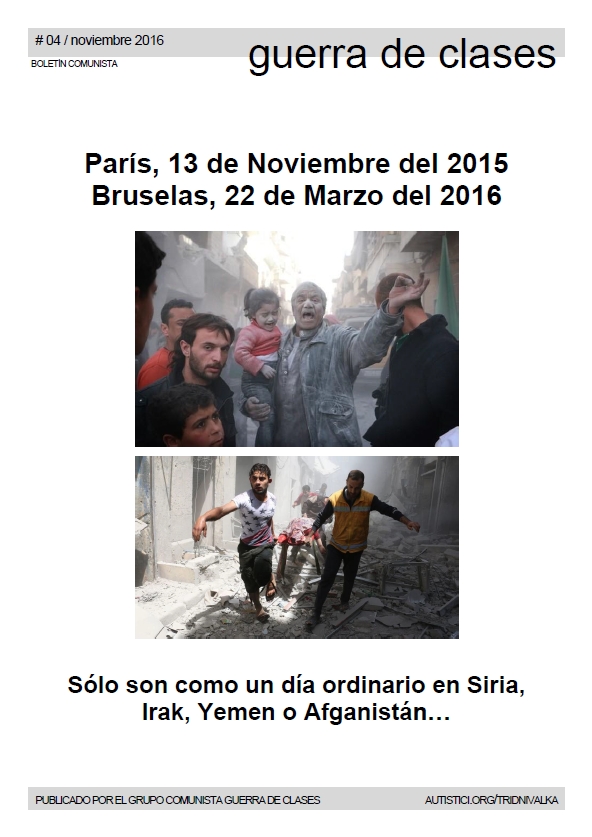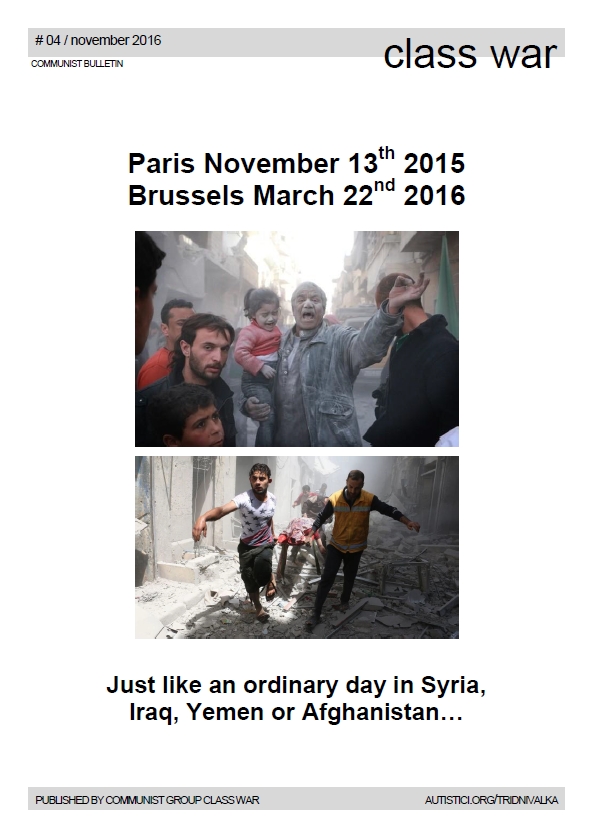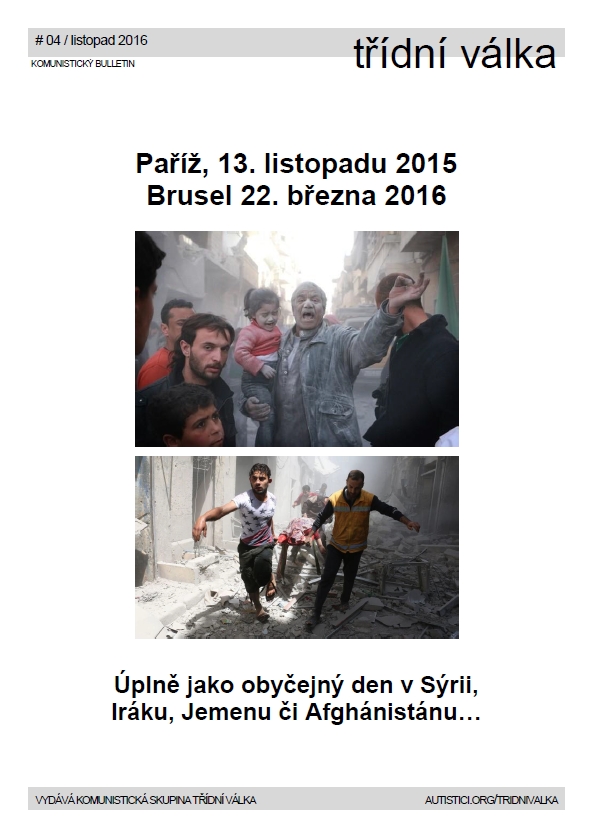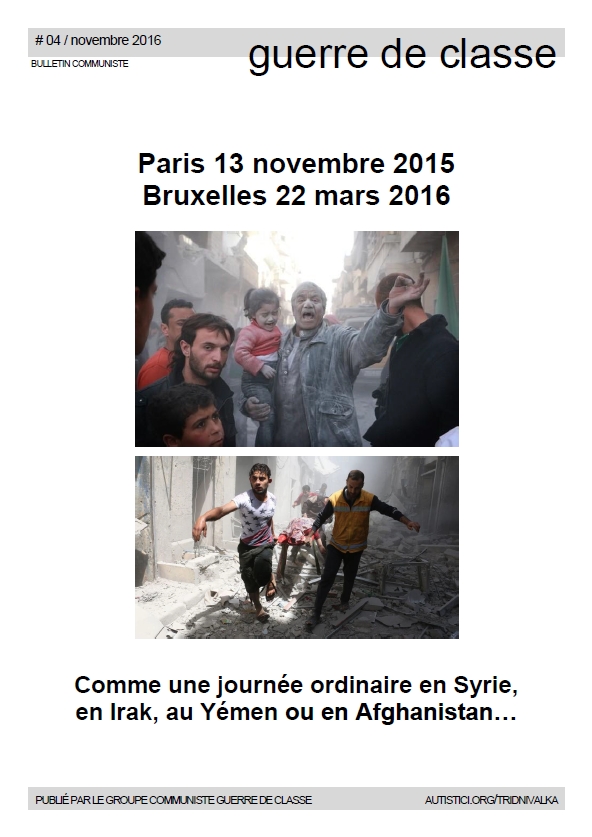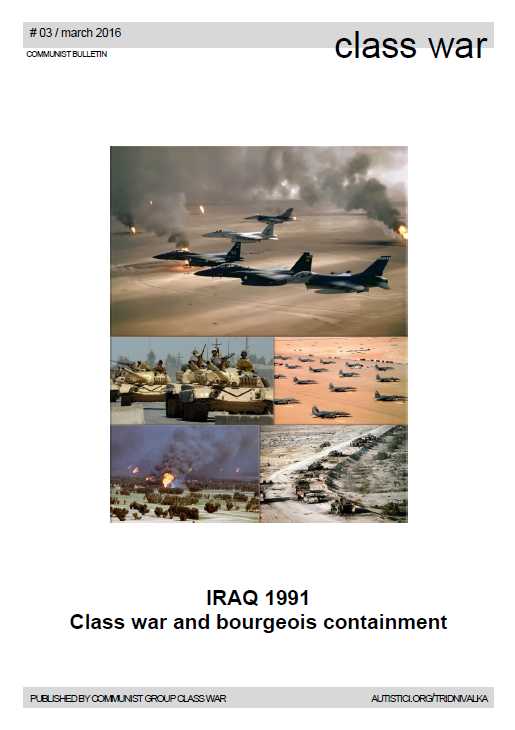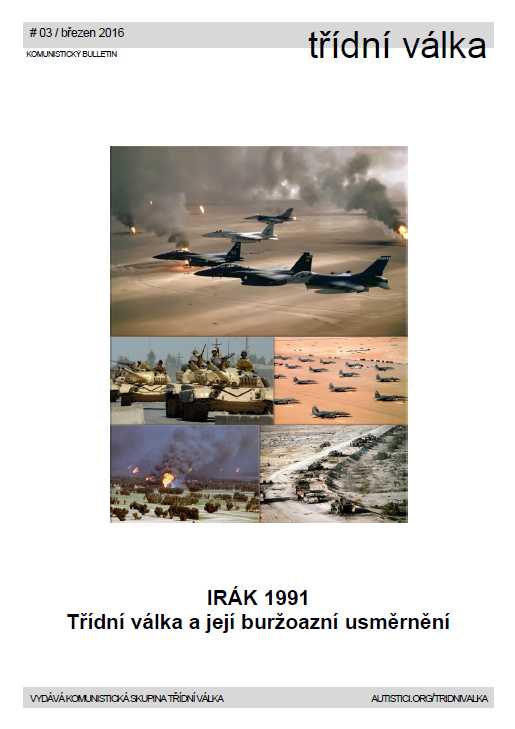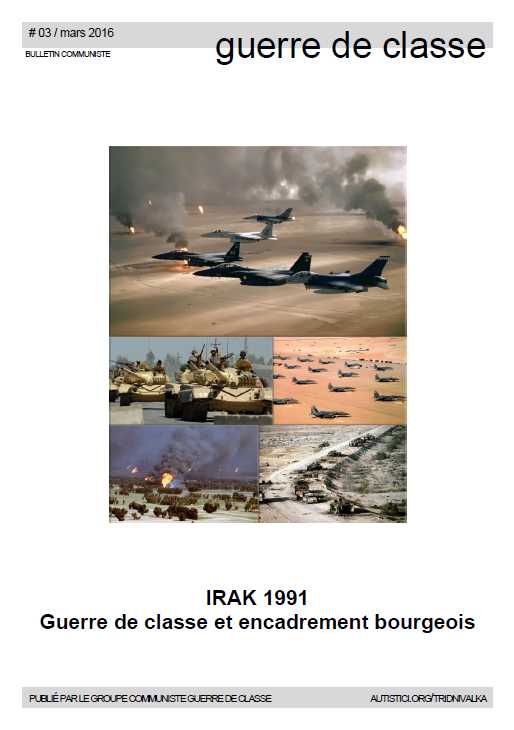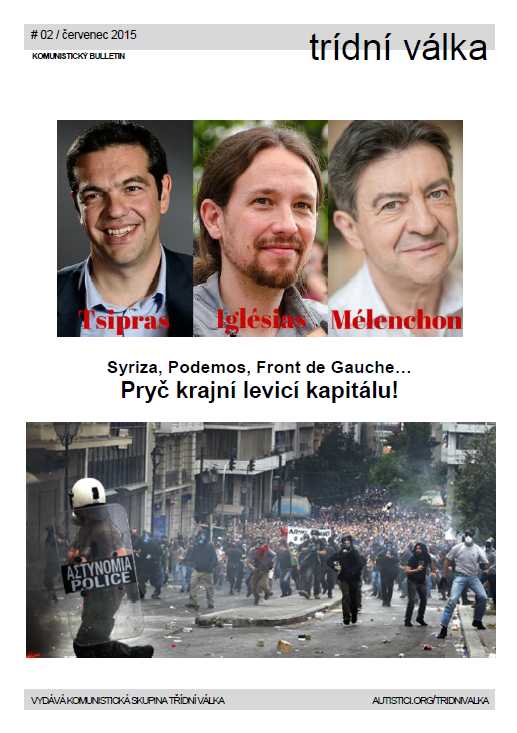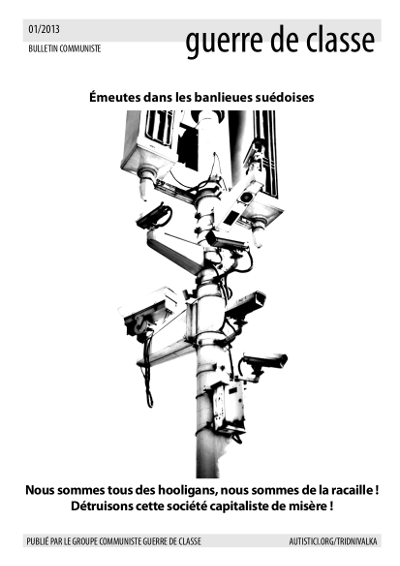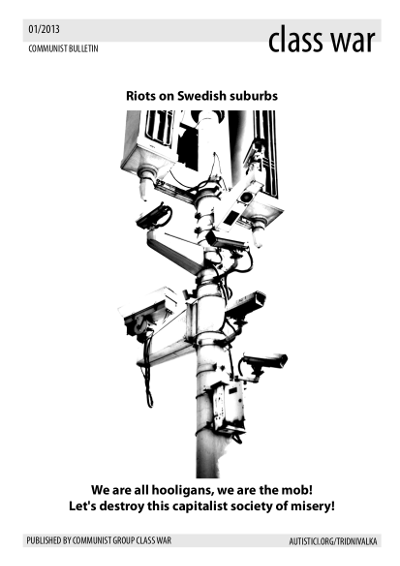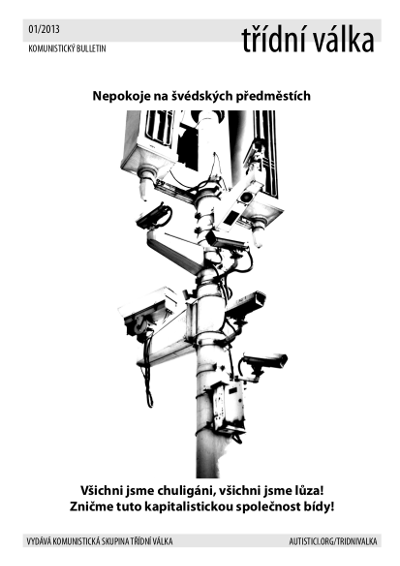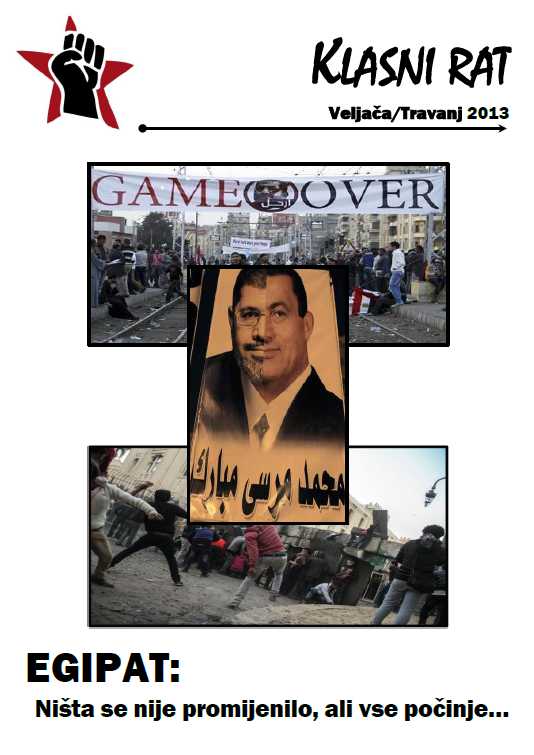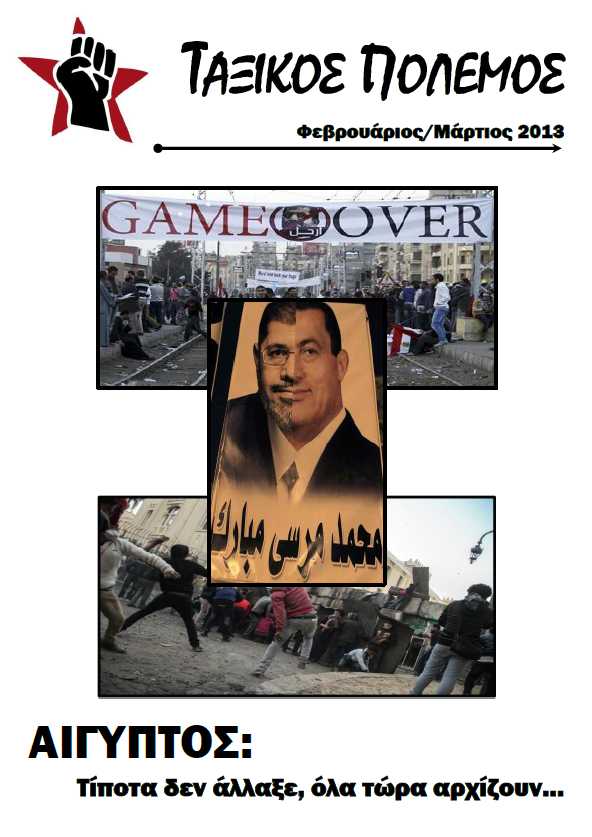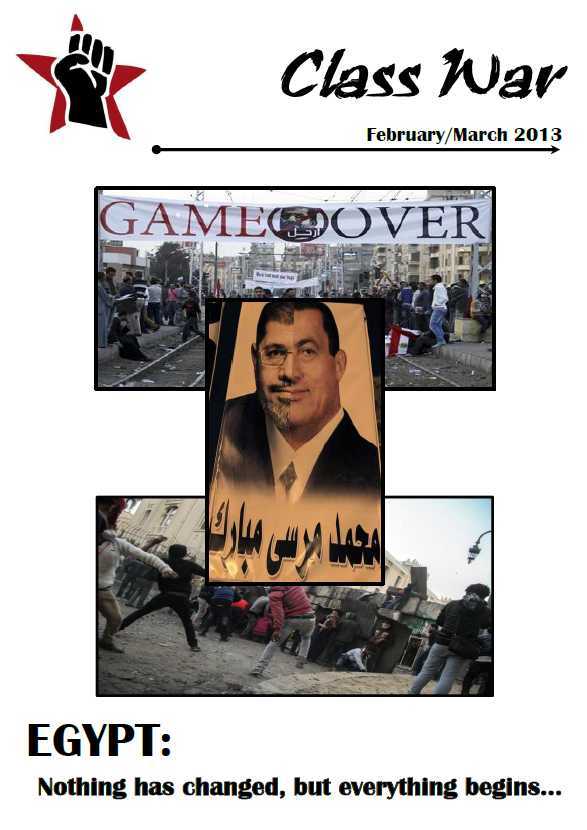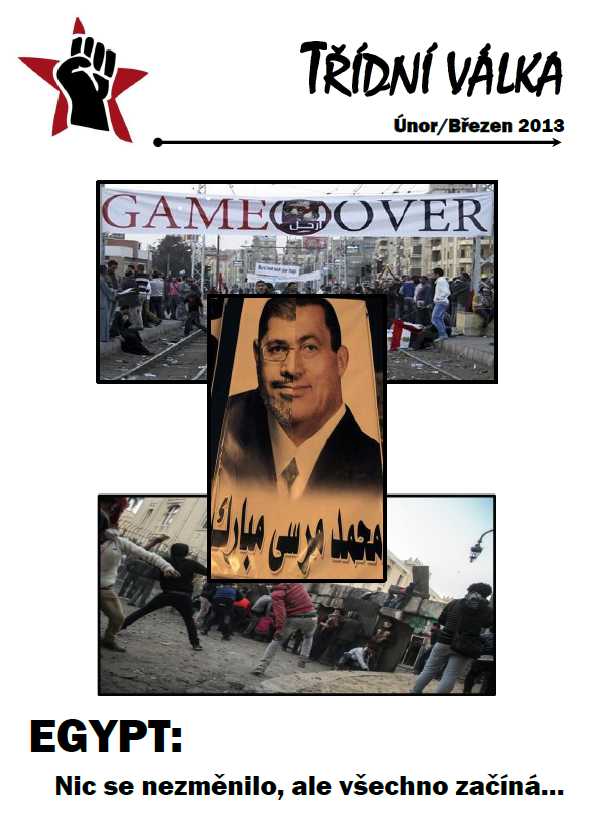| Čeština | English | Français | Português | Italiano | Русский | Türkçe |
Since nearly three years that an uprising broke out in Syria (as a local materialization of the upheavals shaking the whole regions of Maghreb and Mashreq) most of the reactions, comments and critics from militant structures which claim to be revolutionary, internationalist, communist, anarchist… go in the same direction: doubts about what happens, doubts about essential material determinations that give birth to the movements that develop in front of our eyes, doubts about the class nature of these events, doubts about the potentially subversive content of struggles of our class when it doesn’t wave the “good” flags, etc.
Those doubts have been strengthened since the conflict turned into “militarization of the revolution” (as many say) and hijacking of our movement by “opposition democratic forces” and several trends of jihadists, Salafis and other Islamists. But as a militant from Palestine expressed:
“So yes, the Syrian Revolution was indeed hijacked, and we know that there are many Salafis, many jihadists and many other groups, and many pro-America and pro-imperialist groups that tried to hijack the Syrian Revolution. But that does not by any means tarnish the Syrian Revolution, and it also doesn’t mean that just because a revolutionary movement was hijacked that we should stand on the sidelines and stop supporting it. Of course there are still so many revolutionaries working on the ground [...] and there are even many non-sectarian armed brigades that we cannot ignore. If the revolution was hijacked we don’t just go and start blaming the people for it being hijacked. We actually do everything to side with the people in order to get the revolution back on the right track. And this is what many leftists couldn’t understand.”[1]
No revolution in class struggles’ turbulent and violent history ever started with “the good flag”, with “the correct mottos”, with a preestablished and clear “consciousness” of goals and perspectives. All the practical and programmatic advances were built up in painful confrontation with the counterrevolution organized as a strong force.
As we already touched on in our previous leaflets about the struggles in Syria[2], as soon as the government forces are driven away from a city or a region, as capitalism loathes vacuum, new forces, new parties and unions settle to manage the situation and to avoid that it goes off a strict reformist framework. Among these institutions we firstly find various Islamist groups which take in charge the repression against militant structures set up by the movement of struggle. Checks in the streets, arrests, imprisonments, tortures and summary executions of militants, severe sentences by “Islamic courts”, implementation of Sharia law, repression of daily demonstrations against these “new masters”; since Spring 2013 proletarians living in “liberated areas” have been pointing the finger at these Islamist enemies and denounce them just as badly off as the thugs of Baath regime. Among these jihadist groups one of the most virulent and hated by the whole population is the group which claims to be the “Islamic State of Iraq and Sham” (ISIS) affiliated to the international network Al-Qaeda.
As a result of series of very harsh blows against structures of the movement (like the assault on December 28th, 2013 against militants in the town of Kafranbel – generally known as the “conscience of the revolution” in the light of the important propaganda activity developed there) many proletarians massively took to the streets last Friday January 3rd, 2014 in the provinces of Aleppo, Idlib, Raqqa (in the north and northeast of the country) to express their contempt for ISIS. The movement even escalated and occurred in regions where ISIS has limited presence (such as Damascus suburbs and Deraa in the south of the country). Repression was obviously fierce: ISIS militiamen countered assaults of proletarians against their various headquarters while shooting at the angry crowd. The protest movement has developed during all the next week and militants called for a “Day of Rage” on Friday January 10th against both Al-Qaeda in Syria and the regime.
In the process of the street protests several “rebel brigades” also took a stand, some while probably defending the interests of the movement, others while once again trying to use it in order to defend and promote their own interests to conquer the State power on the ruins of Baath regime.
“On the military front a full scale war is also being waged against ISIS. On 3 January groups affiliated to the Free Syrian Army as well as the newly formed Islamic Front and Jaysh Al Mujahidiin started to engage in fierce battles with ISIS, driving out the group from many strongholds in the north, and capturing a large number of ISIS fighters. As of 7 January, twitter reports from activists suggested that ISIS had been driven out of 10 locations in Aleppo, 6 locations in Idlib, 3 in Deir Al Zour and 1 in Hama. Some areas liberated from ISIS, such as Manbej and Binnish have been subjected to fierce shelling by the Assad regime following rebel takeover, leading in the case of Binnish to ISIS being able to retake the town and increasing speculation of military coordination between ISIS and the regime. ISIS has shown it is not leaving without a fight, committing a massacre against FSA troops in Rastan. On 6 January ISIS executed 50 prisoners it was holding in detention in Aleppo including women and activists as well as executing detainees in Harem, Idlib before pulling out of the area. There are also concerns that ISIS withdrawal from some areas, whilst bringing in reinforcements from elsewhere, may be indicative that they are now preparing a counteroffensive.”[3]
Indeed the fact that the government air force bombed areas liberated from the influence of ISIS only strengthens and confirms rumors going around since months that the Baath regime would be hand in glove with this “Islamic State” and other Islamist groups:
“(…) when the regime has carried out onslaughts against Raqqa and Aleppo, its attacks have been on civilian (mainly working class) neighbourhoods and not on ISIS positions or headquarters. The ISIS headquarters in Al Raqqa are stationed in the largest building in the city so they are not difficult to miss, but instead regime airstrikes target schools killing students. ISIS has acted as a scapegoat for the regime’s attack on a popular uprising. Assad’s prisons are full of secular, civilian, non-violent activists whilst Al Qaeda affiliated prisoners were released in the early days of the revolution.” (Idem)
The task of the revolutionaries, the communists, who have absolutely no different interest than other proletarians, is always to put forward the activities in rupture with the present state of things, to act so that the movement of struggle of our class pushes always more in clarifying its objectives and perspectives. We have nothing to expect from an alliance with any faction that defends the global interests of capitalism organized as a State. And in this sense we can only quote once again this Syrian militant on the movement armament issue and the illusions some proletarians can have:
“It is likely that most fighters are drawn to the Islamic Front because it has access to the military assistance and foreign support that has been denied to the Free Syrian Army rather than shared ideology. Undoubtedly, the formation of the Islamic Front and unification of large and powerful military brigades can bring about a military advantage in the fight against Assad. But winning the battle against the regime (and Al Qaeda) is not the same as achieving the goals of the revolution.” (idem)
One of the great lessons that our movement of subversion of this world drew from the confrontation between revolution and counterrevolution in Spain during the years 1936-37 is precisely that while allying with a “lesser evil” (a more progressive faction of the bourgeoisie, a “popular front”) we don’t speed up the defense of our class interests but on the contrary we take part to the defeat of revolution and its crushing.
Anyway we can only once again greet the proletarians in struggle who, far from submitting to the diktats of their new rulers, continue the struggle despite the quasi-generalized ignorance from the rest of the world. This new development in the dynamics of struggle is what this Syrian militant describes on her blog as “revolution within the revolution”. (Idem)
January 2014
[1] Palestine and the Syrian Revolution https://budourhassan.wordpress.com/2013/11/22/palestine-and-the-syrian-revolution/
[2] Again and again more Blood-Baath in Syria https://autistici.org/tridnivalka/again-and-again-more-blood-baath-in-syria/
Airstrikes Threat On Syria! Third World War? No War But The Class War! https://www.autistici.org/tridnivalka/airstrikes-threat-on-syria-third-world-war-no-war-but-the-class-war/
[3] ‘Revolution within the revolution’: The battle against ISIS https://leilashrooms.wordpress.com/2014/01/07/the-battle-against-isis/
